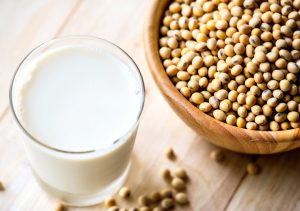
What You Need To Know About Soy Allergy
Share

Soy allergy is a very common type of food allergy that often begins at infancy. Though soy is not really an essential part of an American diet, many products include soy because of its high protein content, ease of production, and versatility.
Soy Allergy Management
Like any other food allergies, you can stay safe from an allergic reaction by avoiding foods that contain soybean or soy. Know the symptoms of an allergic attack and be familiar with using an EpiPen, AUVI-Q or EpiPen alternatives.
Foods That Contain Soy

The following are the popular foods that contain soy protein or based on soy, and there may be more that are not included on this list. We encourage you to always read the labels and consult your doctor before trying new foods for your own nutrition.
- Tofu
- Soy sauce
- Soy milk
- Some yogurt
- Sauces like teriyaki, Worcestershire, and tamari
- Soybean Paste
- Breaded food
- Bean sprout
- Miso
- Edamame
- Alternatives to meat
- Soya oil
Other foods that may contain soy are:

- Bread
- Cereals
- Pasta
- Salad dressing
- Sauces
- Infant formulas
- Gravies
- Seasoning and spices
- Soups or broths
- Meat fillers
- Cooking spray
- Margarine
- Baking Mixes
- Infant formulas
Non-Food Source of Soy:

- Cosmetics
- Soaps
- Vitamins
- Glycerine
- Milk substitutes for young animals
- Craft materials
- Pet food
Other Names of Soy (or hint that a product or food may contain soy)

- Natto
- Hydrolyzed vegetable protein (HVP)
- Glycine max
- Monosodium glutamate (MSG)
- Mono-diglyceride
- Bean curd
- Kinako
- Nimame
- Okara
- Yuba
Symptoms of Soy Allergy Reaction

These symptoms may vary from person to person so if you’re not sure about your condition, we suggest that you consult your doctor or an allergist that can help you get diagnosed.
- Vomiting
- Indigestion
- Stomach cramps
- Diarrhea
- Wheezing
- Weak pulse
- Pale or blue coloring of the skin
- Confusion
- Hives
- Shortness of breath
- Difficulty breathing
- Coughing
- Tightness in throat
- Swelling of tongue and/or lips
- Dizziness
Soy is included in the top eight allergens together with fish, shellfish, peanut, tree nut, egg, and wheat. Though there are fewer reports of anaphylaxis due to soy, we really can’t conclude that it won’t happen. Please be extra careful with the food and product that you’ll consume more importantly when you plan on dining outside. If you can, try to avoid Asian restaurants or cuisines that mostly use soy products with their dishes. Another thing to consider when dining out is cross-contamination and no matter how hard you explain to the cook or chef, they may use the same utensils for cooking your soy-free dish.
Always bring your EAI (Epinephrine Auto-Injector) with you at all times, and be knowledgeable on how to use it and what to do in case of a medical emergency.
References:
ACAAI
https://acaai.org/allergies/types/food-allergies/types-food-allergy/soy-allergy
WebMD
https://www.webmd.com/allergies/soy-allergy
Mayo Clinic
https://www.mayoclinic.org/diseases-conditions/soy-allergy/symptoms-causes/syc-20377802
FARE
